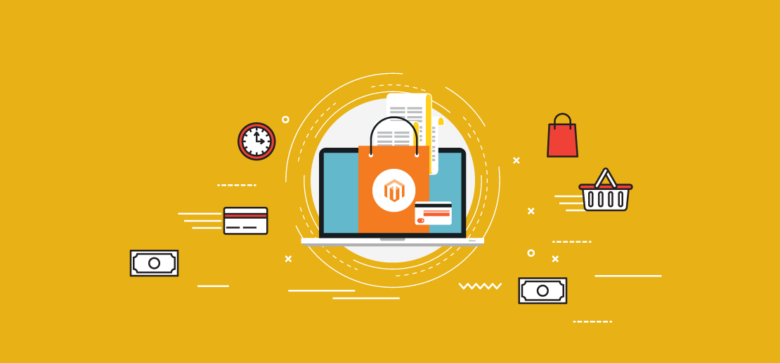Functional testing for the retail domain has become an indispensable step for the business’s success. According to UX statistics, about 88% of customers will only return to the company if they have a good experience, whether poor UX or a lousy user interface. eCommerce testing evaluates the functionality and sanity of various eCommerce website components, including design, specifications, functionalities, pages, and features, to ensure they won’t adversely affect the site’s performance in any way.
Launching a business without proper retail application testing could lead to irreversible damage to the company. Thus, it is essential to run functional and performance testing to safeguard the industry and gain more customers.
What are functional and performance testing types?
With time the demand for online retail has increased from our everyday items to luxury items, and everything is now available online. But along with these benefits, many drawbacks have also arrived, as Statista states that e-commerce sites have lost an estimated 20 billion U.S. dollars worldwide to online payment fraud in 2024.
Functional testing is performed to ensure the specifications of the software are met, while performance testing validates the performance of the software in various conditions.
The strategy for software testing in retail should start by assuming the following:

Source: virtina.com
- Functionality: Finding a product, adding it to the cart, completing a purchase, and paying for it are the three most crucial functions to test
- Evaluation of usability: Whether a purchase can be made quickly and easily by the customer, whether page behavior is apparent, and whether any additional activities make the customer’s choice process more difficult or prevent the sale;
- Technical capacity: The online store’s technical capacity to resist the inflow of customers.
A Magento store that sells products online has a variety of pages, links, products, and other features. The product display page, landing pages, search bar, payment gateway, login, and shopping cart are a few examples of such elements.
Types of functional testing?
- Unit testing: Developers generally perform unit testing. Developers write test scripts to assist testers in determining whether particular software system components adhere to predetermined requirements. To do this, the developer often creates tests that examine each unit method and validate these units using the values supplied by the tests.
- Smoke testing: Testing professionals often do smoke testing, also known as build verification testing, to guarantee the stability of each build.
- Sanity testing: Sanity testing is done by testers to guarantee that all crucial software system features operate without error. After smoke testing, sanity tests are typically conducted.
- Regression testing: Regression testing guarantees that even when programmers add new code, patch defects, or make upgrades, the software system will stay stable and function as intended.
- Integration testing: When there are several modules, integration tests validate the system’s functionality. When combined, these modules might function independently, but can they work fluidly to guarantee an end-to-end scenario? Integration tests provide insight into this issue.
- Usability Testing: In usability testing, a company lets actual customers use their product and conduct tests on it. This test seeks to determine whether people are at ease using the product and how they engage with it.
Checklist for functional and performance testing

Source: nexcess.net
The “web page behavior” should be evident, not deviate from the buyer’s typical scenario, and be predictable to make the purchasing experience in an online store as pleasant as possible. Bright design solutions and quick page responses will only prevent a customer from leaving the store if they can find the needed item or figure out how to place an order.
While conducting performance and functional testing in retail domain, the following must be kept in mind:
- Seamless customer login – The user should have a positive initial experience on the website and be immediately aware of the available products. It is crucial that, at this point, the buyer has access to the seller’s contact information, payment options, and delivery details if desired. These elements are primarily found on the main page. The buyer encounters the ingredients quickly and has the option of leaving the store if they don’t function properly, so it is essential to confirm that they do.
- Intuitive online store catalog: The customer then navigates to the record to browse the products after getting a rough sense of the store. The roster includes categories and subcategories and serves as a store navigator.
- Straightforward and quick checkout: The registration procedure is crucial for an online store because it helps create a customer base and serves as the foundation for audience analysis, stat data collection, and many other things. However, it should be optional to register.
- Personal user accounts: Most significant internet retailers offer unique account features. The user can manage orders, get information about specific deals, examine collected customer loyalty points, and more in the personal account.
- Payment process: Online retailers typically provide a variety of payment methods, including credit cards, cashless payments from accounts, cash on delivery, and more. The objectives and capabilities of a specific online store will determine everything.

Source: newsknol.com
A few things must be kept in mind while testing, such as,
- There should be a redirection to the pages of these services to authorize and complete the payment process if the user wishes to pay online using specific payment services;
- The information should match what is provided at the checkout stage if the user previously learned about the delivery options and costs in the related section of the website: There should be no options unavailable and no price differences;
Conclusion:
With the digital transformation of businesses, providing a flawless system for customers to explore has become essential. To maintain the system, you must not avoid functional and performance testing. With the help of professionals, you can perform these tasks from anywhere on several devices.
With HeadSpin, AI-based testing insights can help you have a smooth-running retail store. Using it is helpful as It integrates seamlessly with your CI/CD workflows, enabling pre- and post-release functional testing.




